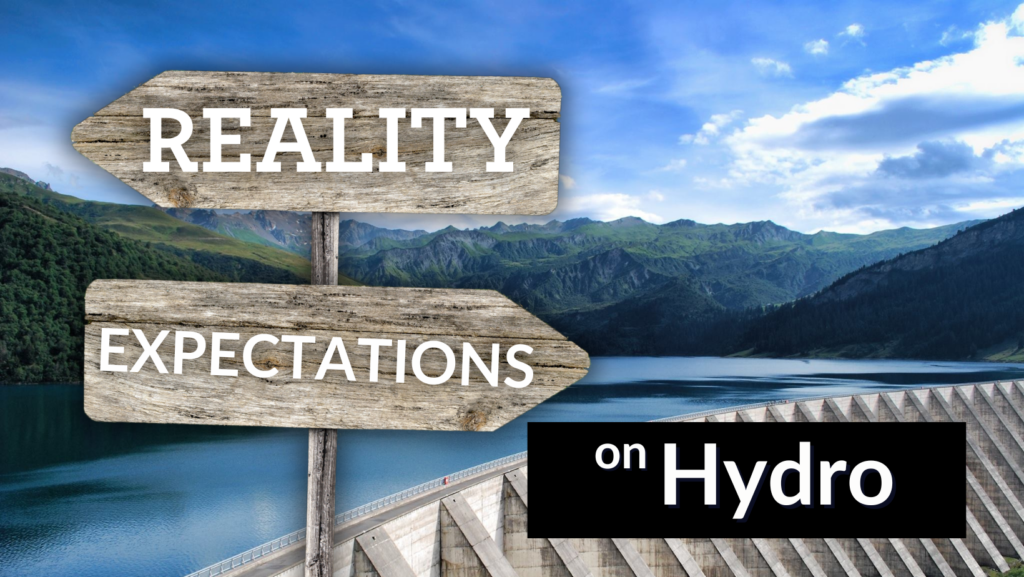Energy investment out of balance – IEA review

The Unpopular Blog Share this blog Subscribe to Blog Nr. 19 IEA 2025 World Energy Investment a Review Dr. Lars Schernikau Linkedin Instagram Youtube Twitter PDF Download Content 10-Year history of the IEA 2025 Energy Investments – cause for concern Costs and profitability Summary Links and Resources In 2015, The International Energy Agency (IEA) issued […]
Blackouts, what causes them?

The Unpopular Blog Share this blog Subscribe to Blog Nr. 18 Blackouts, what causes them? Dr. Lars Schernikau Linkedin Instagram Youtube Twitter PDF Download Beitrag auf Deutsch Content What happened in New York in 2003 and in Spain in 2025? Blackouts vs Brownout or “Loadshedding” Inertia in the Grid and Inverters Blackstart capability, Short Circuit […]
How “Green” does Biomass make the World?

The Unpopular Blog Share this blog Subscribe to Blog Nr. 17 How “green” does Biomass make the world? Dr. Lars Schernikau Linkedin Instagram Youtube Twitter PDF Download Beitrag auf Deutsch Content Biomass, the energy of the sun and of our atmosphere How important is biomass for our energy systems? Global greening Greenhouse gases and environmental […]
Cyber security and critical infrastructure

The Unpopular Blog Share this blog Subscribe to Blog Nr. 16 Cyber Security and critical infrastructure Dr. Lars Schernikau Linkedin Instagram Youtube Twitter PDF Download Content Critical infrastructure, and why is it relevant? Recent examples of critical infrastructure cyber attacks What makes energy systems vulnerable? What is the role of the “energy transition”? Point of […]
Where the wind blows

The Unpopular Blog Share this blog Subscribe to Blog Nr. 15 Where the wind blows… Dr. Lars Schernikau Linkedin Instagram Youtube Twitter PDF Download Beitrag auf Deutsch Content Natural capacity factors, utilization, and conversion efficiency Wind turbines and how they work Environment Costs and supply chains Current market, offshore and onshore Summary Links and Resources […]
Electricity for Data Centers

The Unpopular Blog Share this blog Subscribe to Blog Nr. 14 Electricity for Data Centers… is AI the driving force? Dr. Lars Schernikau Linkedin Instagram Youtube Twitter PDF Download Beitrag auf Deutsch Content Data centers, where it all started and where are we today? Charge me baby… data centers and AI need electricity What do […]
The “Unpopular Truth” about Hydro Power

The Unpopular Blog Share this blog Subscribe to Blog Nr. 13 The “Unpopular Truth”… about Hydro Power Dr. Lars Schernikau Linkedin Instagram Youtube Twitter PDF Download Beitrag auf Deutsch Content Hydro Power: History and Today Electric generation from hydro, reliability, and the “Energy Transition” Climate and hydro?… Raw materials, land-use, Biodiversity, and more Summary Links and […]
Are Wind and Solar up for the challenge?

The Unpopular Blog Share this blog Subscribe to Blog Nr. 12 Are Wind and Solar up for the challenge? A summary of the energy-economic fundamentals of wind and solar to generate ‘grid-compatible’ electricity Dr. Lars Schernikau Linkedin Instagram Youtube Twitter PDF Download Beitrag auf Deutsch Content Transition or addition? At the core of electricity supply […]
Hydrogen… what more can we wish for?

The Unpopular Blog Share this blog Subscribe to Blog Nr. 11 Hydrogen… what more can we wish for? Dr. Lars Schernikau Linkedin Instagram Youtube Twitter PDF Download Beitrag auf Deutsch Content A brief history of hydrogen Why is carbon important for H2? How to make H2 and what powers H2 storage? What about money and safety?… […]
Natural Gas or Coal

Natural Gas or Coal, do we have a choice?
